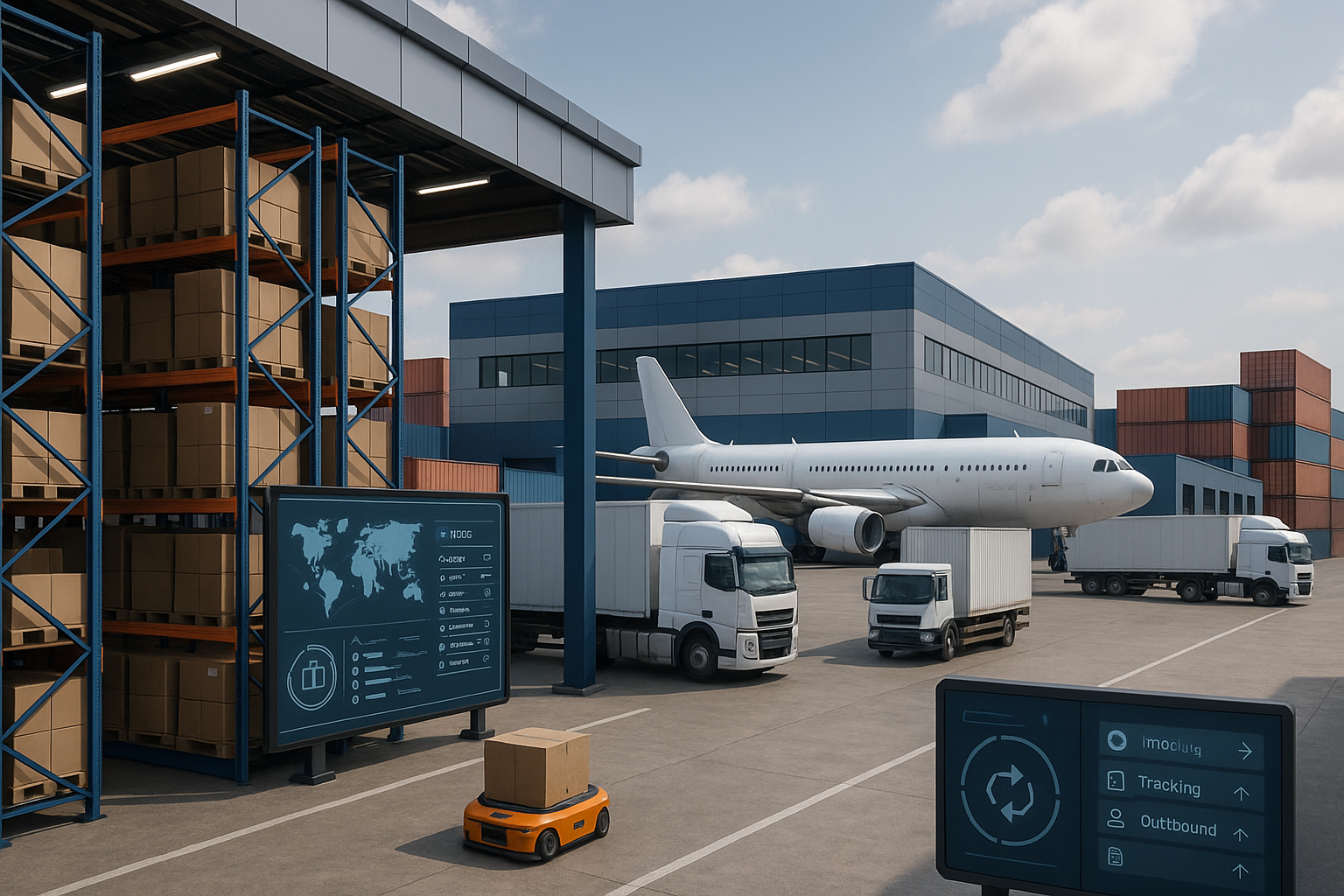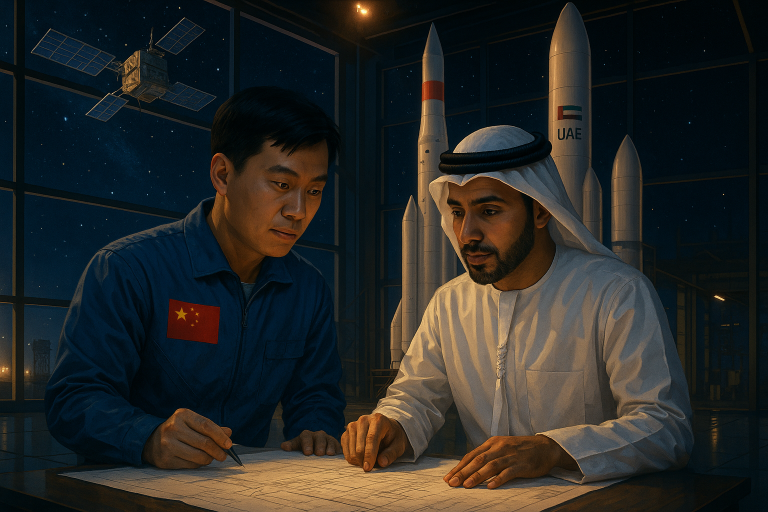Logistics and Supply Chain Mastery: Connecting East and West
Introduction
Picture a colossal container ship, laden with goods from Shanghai, gliding gracefully into the sprawling terminals of Jebel Ali Port in Dubai. At the same time, a state-of-the-art cargo plane from a Chinese commercial hub touches down at Al Maktoum International Airport, its belly full of high-value electronics and time-sensitive pharmaceuticals. These are not isolated events; they are the daily, rhythmic pulse of one of the world’s most formidable logistics and supply chain corridors, forged through the strategic partnership between the People’s Republic of China and the United Arab Emirates. This partnership has masterfully combined China’s unparalleled manufacturing and export power with the UAE’s strategic location and world-class infrastructure, creating a central nervous system for trade that connects the economic heart of the East with the vast and growing markets of the Middle East, Africa, and Europe. This article explores the key dimensions of this logistics mastery, from the pivotal role of the UAE’s maritime gateways and aviation hubs to its seamless integration with the Belt and Road Initiative and the shared vision for a future of smart, digital, and sustainable logistics.
Maritime Gateway: The Power of UAE Ports
Maritime shipping is the undeniable backbone of global trade, and for the China-UAE economic relationship, the UAE’s ports serve as the primary and most vital gateway. The vast majority of the more than $100 billion in bilateral trade travels by sea, and the UAE’s maritime infrastructure is engineered to handle this immense volume with unmatched efficiency. This is not just about receiving goods for the local market; it is about functioning as a massive, high-speed distribution center for the entire region.
Case Study: Jebel Ali Port and JAFZA
At the heart of this maritime prowess is Dubai’s Jebel Ali Port, one of the world’s largest and most technologically advanced container ports. Its scale and efficiency are legendary in the logistics industry. But the true genius of the model lies in its integration with the adjacent Jebel Ali Free Zone (JAFZA). This combination creates a seamless ecosystem where goods can be imported, stored, processed, and re-exported with minimal friction and maximum speed. Thousands of Chinese companies have established operations in JAFZA, using it as their regional warehousing and distribution hub. This allows them to maintain inventory closer to their end markets, reducing delivery times and enabling them to respond more nimbly to regional demand. A container can be offloaded from a ship, cleared through customs, and moved to a warehouse in JAFZA in a matter of hours, a level of efficiency that provides a significant competitive advantage.
Case Study: Khalifa Port and the COSCO Terminal
The strategic partnership is also on full display in the nation’s capital, Abu Dhabi. At Khalifa Port, a landmark collaboration with China’s COSCO SHIPPING Ports has resulted in the development and operation of a major, semi-automated container terminal. This strategic investment by a Chinese state-owned enterprise has dramatically boosted the port’s capacity and operational efficiency. The partnership extends to the adjacent Khalifa Industrial Zone (KIZAD), where a 2.2 square kilometer China-UAE Industrial Capacity Cooperation Demonstration Zone has been established. This creates a perfect “port-to-factory” logistics chain, allowing Chinese manufacturers to import raw materials, assemble or manufacture products within the industrial zone, and then export the finished goods to global markets through the adjacent port, all within a single, highly efficient ecosystem.
Aviation and Air Cargo: The Speed of Connectivity
While sea freight forms the foundation, the UAE’s global leadership in aviation provides the speed and connectivity essential for high-value and time-sensitive goods. The UAE’s major international airports in Dubai and Abu Dhabi are not just tourist hubs; they are among the busiest and most important air cargo hubs in the world. An extensive network of direct flights by carriers like Emirates, Etihad, and Chinese airlines connects the UAE with every major commercial and industrial center across China, ensuring a constant and rapid flow of goods.
The UAE’s national carriers, with their massive fleets of dedicated cargo aircraft, are critical players in this aerial corridor. They transport a diverse range of products, from the latest consumer electronics and vital pharmaceuticals that require temperature-controlled environments to fresh, perishable foods. This air bridge is essential for modern, just-in-time supply chains. The ultimate expression of this integrated logistics model is the Dubai Logistics Corridor, a unique, bonded corridor that provides a seamless link between Jebel Ali Port and Al Maktoum International Airport (DWC). This innovation allows cargo to be transferred from a ship to a plane (or vice-versa) in as little as a few hours, without the need for lengthy customs procedures. This sea-air freight model offers a perfect compromise between the cost-effectiveness of ocean shipping and the speed of air cargo, a value proposition that is highly attractive for global supply chains originating in China.
Integrating with the Belt and Road Initiative
The UAE’s logistics infrastructure was not built for the Belt and Road Initiative, but it could not have been a more perfect fit. When China launched the BRI with its vision of a “21st Century Maritime Silk Road,” the UAE was not a location that needed to be developed; it was a ready-made, world-class hub that could be immediately integrated into the network. Its existing ports, airports, and free zones were the physical embodiment of the BRI’s goals of enhanced connectivity and trade facilitation.
The partnership is now focused on further enhancing this integration. Chinese investment is helping to expand and upgrade the UAE’s logistics capabilities, while both sides are working together to improve supply chain links with other countries in the region and along the BRI routes. This collaboration also extends to the Digital Silk Road. Both countries are pioneering the use of digital logistics platforms, incorporating technologies like blockchain for transparent cargo tracking, IoT sensors for monitoring shipment conditions, and AI-powered systems for optimizing supply chain management. These innovations are making the China-UAE corridor not just one of the world’s busiest, but also one of its smartest and most transparent.
The Future: Smart and Sustainable Logistics
The future of the China-UAE logistics partnership is focused on making the supply chain smarter, faster, and more sustainable. The next wave of collaboration will be in areas like fully automated warehouses, where robotics can handle the sorting and movement of goods with incredible speed and accuracy. The use of big data and artificial intelligence to create “digital twins” of the supply chain will allow for predictive analytics, helping to anticipate and mitigate potential disruptions before they occur.
Sustainability is also a top priority. Both partners are exploring joint initiatives to create a “green logistics” corridor. This includes everything from optimizing shipping routes and vessel speeds to reduce fuel consumption and emissions, to investing in electric and hydrogen-powered trucks for last-mile delivery, and promoting the use of more sustainable packaging materials. In this complex and rapidly evolving sector, the UAE China Chamber of Commerce (UECN) plays a crucial role, connecting logistics providers, trading companies, and technology firms, and helping them to build the efficient, resilient, and sustainable end-to-end supply chain solutions of the future.
Conclusion: The Indispensable Corridor
The mastery of logistics and supply chain management is a defining and indispensable feature of the China-UAE partnership. It is the physical manifestation of their shared economic vision. The UAE’s world-leading ports and aviation hubs, deeply integrated with China’s manufacturing heartlands and seamlessly connected to the framework of the Belt and Road Initiative, have created a corridor that is far more than just a route on a map. It is the central nervous system for a vast and growing network of regional and global trade, pumping goods, capital, and innovation across continents. This logistics prowess is a key engine of global commerce and a powerful testament to what can be achieved when two visionary nations work together to build the connections that define the future of our interconnected world.







